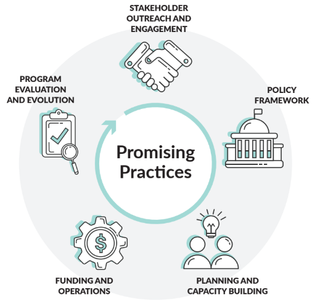Pew: States Make Gains in Closing Digital Divide
From retraining Colorado coal miners to lay fiber to making it possible for a software engineer to work remotely from his small Wisconsin town, states are finding ways to help close the rural broadband gap, with the help of stakeholders and creative policymakers.

That is the takeaway from a new Pew Charitable Trusts survey, which includes that states are taking strong steps to close infrastructure and adoption gaps, calling them "crucial partners in broadband expansion."
Pew says that while a lot of the focus has been on federal and local efforts, states are "stepping in" to help fill the broadband gap.
The study surveyed broadband buildout and adoption efforts in all 50 states and drilled down on efforts in nine states, California, Colorado, Maine, Minnesota, North Carolina, Tennessee, Virginia, West Virginia, and Wisconsin. Pew said it talked to more than 300 stakeholders, including representatives of state broadband programs, ISPs, local governments, and broadband coalitions.
The study identifies various state approaches to extending broadband into underserved or unserved areas.
"Communities without reliable high-speed internet service cite a growing gap between the resources and opportunities available to their residents and those in communities that have a robust network," the report says. "Recognizing the importance of broadband and responding to such frustrations, states are seeking to close this gap. Most have established programs to expand broadband to communities that lack it or are underserved."
Among the the "promising practices" Pew says it identified:
Multichannel Newsletter
The smarter way to stay on top of the multichannel video marketplace. Sign up below.
• "Stakeholder outreach and engagement. All states with broadband programs are working to engage stakeholders at both the state and local levels.
• "Policy framework. Many states have created a policy framework for broadband deployment by setting well-defined goals and a clear policy direction in legislation and tasking agencies or setting up separate offices to lead statewide broadband programs.... And they are connecting broadband to other policy priorities, including economic development, transportation, health care, and agriculture, to build partnerships and leverage more funding for expansion efforts.
• "Planning and capacity building. Half of states have plans that define goals and objectives that provide a baseline against which to measure progress. Some also support local and regional planning efforts that help educate community members and build the local capacity necessary for successful broadband infrastructure projects.
• "Funding and operations. Some states are providing funding to support broadband deployment in unserved and underserved areas through grant programs that fund a portion of the cost of deployment in these communities. They are also ensuring accountability by requiring that grantees demonstrate they are providing the service they were funded to deliver while also providing the state with the data needed to evaluate the program and progress toward defined goals.
• "Program evaluation and evolution. States that are supporting planning efforts and funding infrastructure projects are evaluating the performance of these efforts and incorporating lessons learned..."
The FCC is working on a national level to close that gap, including with a new infusion of $20 billion over 10 years for rural broadband it approved in January. But it has had ongoing issues with the accuracy of the data it uses to identify where broadband is and isn't. FCC Chairman Ajit Pai has also made clear that the money won't go to areas in states that are already getting money through other subsidy programs, like the USDA's Rural Utilities Service.
Contributing editor John Eggerton has been an editor and/or writer on media regulation, legislation and policy for over four decades, including covering the FCC, FTC, Congress, the major media trade associations, and the federal courts. In addition to Multichannel News and Broadcasting + Cable, his work has appeared in Radio World, TV Technology, TV Fax, This Week in Consumer Electronics, Variety and the Encyclopedia Britannica.










